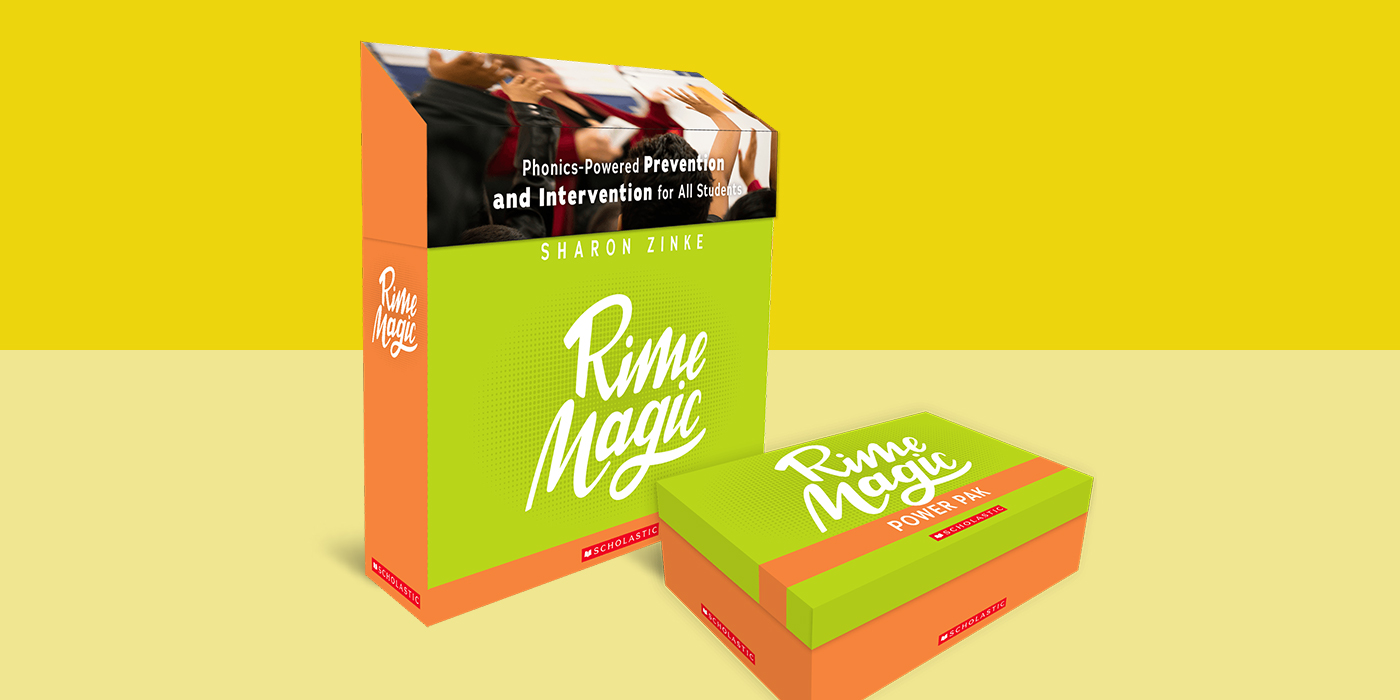Segmenting words by their individual phonemes and hearing each one as a separate unit is a difficult task for many students. To ask a five-year-old child to respond to the word stand by attempting to pronounce each phoneme separately (s/t/a/n/d) is to take the most isolated, least accessible approach to the introduction of the sounds of letters within words.
Our brains love patterns and want chunks or parcels of letters that we can grab onto and use to make analogies. Breaking the word into separate parts based on onset/rime makes sense in the human brain, e.g., st/and.
If I go into a kindergarten or first-grade classroom and play a word game with the class, it might go like this:
TEACHER: I say cat, you say at. . . . I say dog, you say ______ . (Students will right away respond with og.)
- If I say smile, they will respond with ile.
- If I say stand, they will respond with and.
- If I say lake, they will respond with ake.
We begin by focusing on rimes, but instead of asking students to spend time practicing blending the letters of one-syllable words with a common rime (such as mat, cat, flat), we dive right into two- and three-syllable words, which students in grades 2 and up are already encountering in grade-level texts.
By challenging students to discover the key part of the word (the rime) in a word that includes both an onset and an ending or endings, we help them begin to home in on the rime within what had previously appeared as a confusing string of letters. In the process of learning to see the rime within the word, students effortlessly learn the two- and three-letter blends, the art of blending onset and rime, and easily attaching endings to form a longer word.
This approach engages even high school students who are eager to participate when they quickly find themselves recognizing the ip in slippery or the at in scattering, and even the on in responsibility.
When you teach each phonic element in a particular sequence one at a time for mastery, it takes quite some time to get through them, and many students need more practice as the rest of the class moves on. Rather, we immerse the student in all of the important skills all at once. Students do not have to remember any particular discrete skill; as they are swept up in the rhythmic repetition, they master the process at their own rate.
For example, we do not start with short-a words. We immerse students in all of the short vowel sounds. We start with 35 two-letter, short-vowel rimes (at, ot, ig) and work with all of them at once. We shuffle the deck of Magic Rime Cards so that there is no pre-established order to their presentation. This immersion technique is one of the reasons that the strategies are mastered so quickly by students of all ages (K-12) whose word recognition is below third grade level.
Short, highly interactive, daily sessions are the key to both intervention and prevention. Upper-grade students whose word recognition is below grade level will quickly respond to the onset/rime strategies, moving closer and closer to reading grade-level text easily, and being able to participate successfully in reading and writing with their peers.
In addition, the short sessions delivered each morning as part of any language arts program will prevent primary-grade students from falling behind in word recognition. Young students who have been reluctant to focus on words become enthusiastic participants in the short lessons as they discover the secret to unlocking the way words work in English.
This approach brings so much awareness of word structure in such a short time that teachers can focus on metacognition and monitoring of comprehension, questioning, visualizing, inference, and all the other effective comprehension strategies that will send their students into the upper grades as engaged and active readers.
